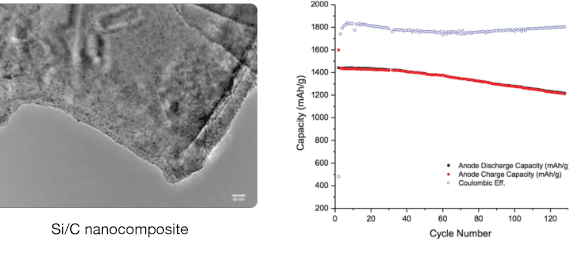Silicon Anode Application
The Coretec Group's Cyclohexasilane™
The Coretec Group’s Cyclohexasilane (CHS) is a liquid at room temperature, providing manufacturing advantages in processing the silicon and silicon/carbon nanostructures needed in today’s silicon anodes as a direct replacement for graphite in high energy lithium ion battery anodes. A key benefit is the potential for superior charge-discharge cycle lifetime and increased energy density.
Features & Benefits
Process as Liquid or Gas
Lower cost and more facile processing yielding silicon nanowires with solution chemistries
Ease of Manufacture
CHS can readily yield silicon nanostructures in solution, be used to make Si/C composites in a single pot, and be implemented into existing PECVD/CVD/ALD processes
Liquid Transport And Storage
Lower storage and transportation costs compared to gas
Long Shelf Life
Two year shelf life when stored at room temperature
The Challenge
The Possibility
The Coretec Group’s Cyclohexasilane’s unique liquid state enables a new type of silicon anode fabrication and by replacing the graphite anode commonly used in lithium-ion batteries with pure silicon, silicon-carbon nanocomposites, or alloys, a dramatic increase in energy density can be achieved. Silicon based materials store more lithium ions, and when nanostructured reduce the potential for damage due to decreased silicon expansion. CHS has been successfully used to create silicon thin films and silicon-carbon nanocomposites including carbon coated silicon nanowires and core shell nanostructures. CHS also presents an opportunity for highly doped silicon materials and silicon alloys with B, P and Ge, respectively.
What Does This Mean?
 The increased energy density of the anode enables greater capacity from the same battery size and weight. When optimized with the cathode and electrolyte, silicon anodes used in lithium-ion batteries have an increased potential for fast charging, extended range, and longer cycle life.
The increased energy density of the anode enables greater capacity from the same battery size and weight. When optimized with the cathode and electrolyte, silicon anodes used in lithium-ion batteries have an increased potential for fast charging, extended range, and longer cycle life.

